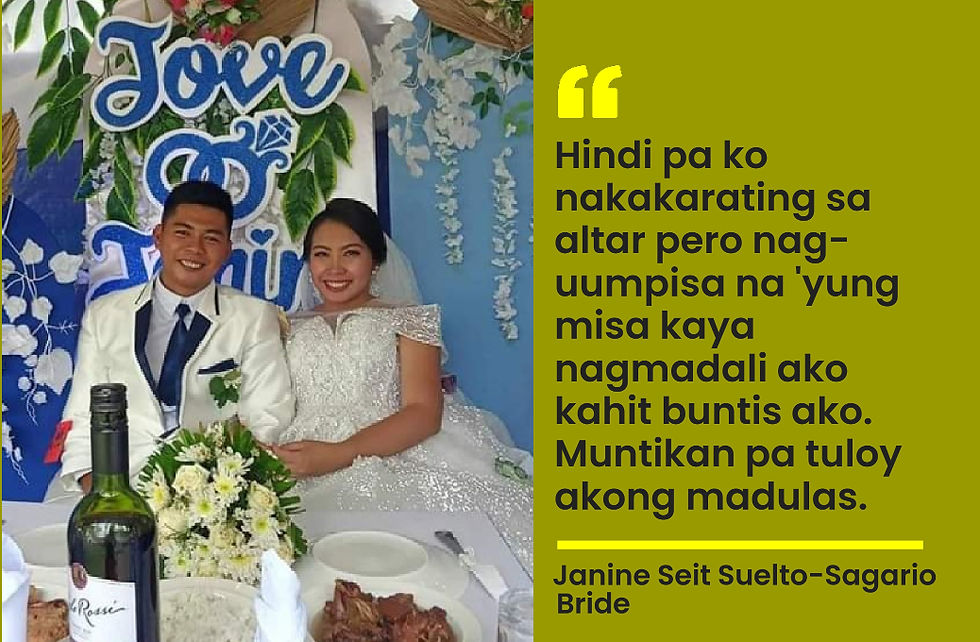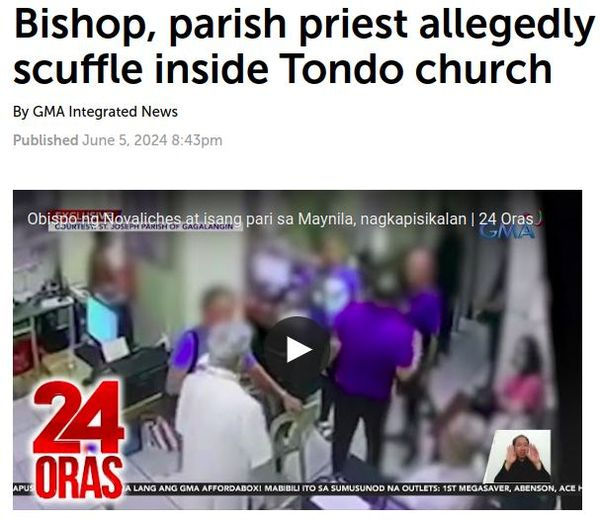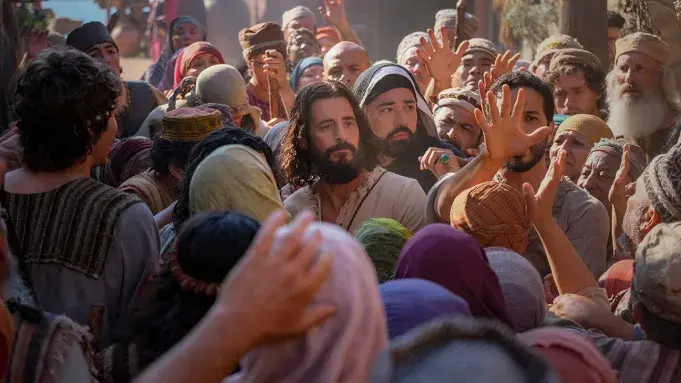Remembering the Victims of Marcos' Martial Law
- josnardionzon5
- Sep 21, 2023
- 10 min read

“Those who get in the way get killed.”
--Archbishop Oscar Romero, martyr and saint
Archbishop Oscar Romero denounced the state-sponsored violence in El Salvador:
I would like to make a special appeal to the men of the army, and specifically to the ranks of the National Guard, the police, and the military. Brothers, you come from our own people. You are killing your own brother peasants when any human order to kill must be subordinate to the law of God, which says, 'Thou shalt not kill.' No soldier is obliged to obey an order contrary to the law of God... In the name of God, in the name of this suffering people whose cries rise to heaven more loudly each day, I implore you, I beg you, I order you in the name of God: stop the repression.
What was the response of the state?
Archbishop Romero was assassinated as he was celebrating the Mass. His death marked a significant moment in the struggle for justice and human rights in El Salvador.
The El Salvador Experience
It was a chaotic era of civil war (1979-1992) in El Salvador. On October 15, 1979, a coup d'état brought the Revolutionary Government Junta (JRG) to power in El Salvador. This junta undertook nationalization of private companies and took control of privately-owned land, with the aim of quelling the ongoing revolutionary movement triggered by the disputed election of José Napoleón Duarte. However, opposition from the oligarchy, which resisted agrarian reform, led to the dissolution of the junta due to its inability to control the army's repression of people demanding unionization rights, agrarian reform, better wages, accessible healthcare, and freedom of expression.
Simultaneously, the guerrilla movement was gaining ground across Salvadoran society, with students, both secondary and college, organizing under MERS and AGEUS, respectively, and workers forming the BPR. In October 1980, major guerrilla groups united to form the Farabundo Martí National Liberation Front (FMLN), while government-contracted death squads were killing around 10 people daily by the late 1970s. The FMLN had thousands of active guerrillas and a vast network of supporters.
The United States, in an effort to alter the political landscape and suppress the leftist insurrection, supported and financed the creation of a second junta, appointing Napoleón Duarte as its head. However, by this point, a revolution was already in progress, and Duarte's new role was perceived by the population as opportunistic, rendering him unable to influence the insurrection's outcome.
During this turbulent period, Archbishop Óscar Romero of San Salvador emerged as a vocal critic of the injustices and massacres committed by government forces. He was assassinated by a death squad while conducting Mass on March 24, 1980, an event considered by many as the beginning of the full-scale Salvadoran Civil War, which lasted from 1980 to 1992.
The conflict witnessed an unknown number of "disappearances," and the United Nations reported that over 75,000 individuals were killed. The US-trained Atlácatl Battalion of the Salvadoran Army was responsible for atrocities like the El Mozote massacre, where over 800 civilians, including many children, were murdered, as well as the El Calabozo massacre and the killing of UCA scholars.
Archbishop Romero
On February 3, 1977, Óscar Romero became Archbishop of San Salvador, initially receiving mixed reactions. Some progressive priests were concerned about his conservative reputation potentially hindering liberation theology's focus on helping the poor. However, Romero's perspective shifted dramatically after the assassination of his close friend, Jesuit priest Rutilio Grande, on March 12, 1977. This event prompted Romero to become a vocal advocate against poverty, social injustice, and government violence.
The situation escalated as right-wing paramilitary groups and the government increased human rights abuses, leading to the Salvadoran Civil War in 1979. Romero criticized U.S. military aid to the new government and sent an open letter to President Jimmy Carter expressing his concerns. Though Carter did not directly respond, Secretary of State Cyrus Vance conveyed a somewhat ambiguous message. Romero also met with Pope John Paul II in May 1979 to seek Vatican condemnation of the Salvadoran regime's human rights violations.
On March 23, 1980, Archbishop Óscar Romero delivered a powerful sermon calling upon Salvadoran soldiers to stop the repression. The next day, March 24, as he celebrated Mass at a hospital chapel, an assassin shot him in the heart and killed him.
Marcos and Martial Law
When Ferdinand Marcos won the presidency, he faced an economic crisis caused by the oligarchs, widespread discontent among the people, and threats from communist insurgency and Muslim rebellion. These problems can be traced back to post-World War II neocolonial Philippines.
The post-World War II era in the Philippines was marked by agrarian unrest, with peasants suffering exploitation and oppression at the hands of land-owning elites. The Partido Komunista ng Pilipinas (PKP) became a major political player in electoral politics and gained significant support, especially among peasants. They won six seats in Congress. The Hukbalahap, many of whose members were PKP cadres, was a communist-led guerrilla movement that primarily operated in rural areas, seeking to address issues of land reform, labor rights, and social justice. The PKP continued to exist as a political party, while the Hukbalahap pursued armed insurgency.
The U.S. imposed several agreements as conditions for the granting of independence, such as the Bell Trade Relations Act, which continued the free trade policy, the Parity Rights agreements, which allowed American corporations to do business in the country and exploit its natural resources, and the Foreign base agreements, which allowed military presence in the country. To secure the ratification of these trade agreements, then-President Roxas declared the Partido Komunista ng Pilipinas (PKP) illegal to eliminate opposition.
Despite its parliamentary setbacks, the PKP joined forces with the Hukbalahap to create a stronger revolutionary movement, gaining popular support from the peasants. They launched several attacks on the poorly equipped military and assassinated corrupt government officials. The Huk was neutralized during the administration of President Elpidio Quirino. In addition to receiving US military equipment, U.S. CIA operatives assisted Ramon Magsaysay, the defense secretary, in combating the Huks by introducing non-military components of counter-insurgency, such as military involvement in relief and medical operations, reconstruction projects, and more. Magsaysay also offered resettlement in Mindanao to address landlessness, which was considered the root cause of insurgency.
With the help of the Americans, Magsaysay won the presidency. He had a reputation for honesty, integrity, and a connection with the common people. He portrayed himself as a champion of the common Filipino people, a man of the masses, and his humility and simple lifestyle resonated with many voters tired of elitist politics at the time. Besides inviting former Huk members and others to resettle in Mindanao, the "land of promise," Magsaysay initiated a land reform program. Moreover, Magsaysay ran as the candidate of the Nacionalista Party, one of the major political parties in the Philippines at the time, which provided him with a strong party organization and a platform to run his campaign. His term was cut short due to a tragic death in a plane crash, and his Vice President, Carlos Garcia, assumed power.
The Garcia administration grappled with foreign exchange rate crises due to US trade agreements. Thus, Garcia implemented some protectionist measures that favored Filipino entrepreneurs over American ones. U.S. pressure to lift these controls failed, leading to US support for Garcia's opponent, Diosdado Macapagal.
Diosdado Macapagal reversed Garcia's measures upon taking office by liberalizing imports and the economy. However, IMF-prescribed free trade policies primarily benefited wealthy land-owning elites, leaving the majority of the population in poverty. Diosdado Macapagal's attempts at agrarian reforms faced opposition from the landed elite in Congress.
When Ferdinand Marcos won the presidency, he faced an economic crisis due to the oligarchs and the widespread discontent of the people. Two threats were the communist insurgency and the Muslim insurgency. These three social problems were used by Marcos to justify declaring martial law.
Thus, he appointed technocrats to address the fiscal and monetary crisis, while the military pursued the insurgents.
By the mid-60s and early '70s, the rise of student activism, with its anti-government and anti-US sentiments, coincided with the realization that the massive poverty of the people was caused by an unjust economic system. Student radicals joined farmers and workers in denouncing the Marcos government and U.S. imperialism. The communists bombed Plaza Miranda, where many opposition leaders were killed and wounded. Ninoy Aquino, who knew about the bombing, arrived late and survived. He took the opportunity to blame Marcos for the bloody bombing and accused Marcos of preparing the ground for the imposition of martial law after Marcos suspended the 'writ of habeas corpus.'
Marcos initiated a transformative project known as the New Society, aiming to revolutionize the nation at its core during a period of remarkable infrastructure growth. His focus on food security led to the implementation of the Green Revolution, a monumental agricultural shift that modernized farming practices, significantly increasing agricultural productivity. Among its notable achievements was the introduction of Masagana 99, a high-yielding rice variety that not only enhanced self-sufficiency but also symbolized progress and alleviated hunger, fundamentally reshaping the Philippines' agricultural landscape. Marcos wielded an extensive grip on information that extended beyond the closing of Congress and his manipulation of government-controlled media channels, forming a multi-pronged strategy to shape the narrative of Philippine history and society. His insidious methods included co-opting academics, especially historians and social scientists, who he recognized as pivotal in legitimizing his rule and justifying his actions.
These scholars were enlisted to construct a skewed version of Philippine history that exalted Marcos while diminishing the contributions of opposition figures and movements, distorting the nation's identity to align with his authoritarian regime. State resources were funneled into research projects and publications, not only molding domestic public perception but also securing international support and credibility.
Moreover, Marcos tightly controlled the dissemination of information through state-run media outlets, such as newspapers, radio, and television, using them to disseminate propaganda and stifle dissent. Journalists and media professionals critical of the regime were met with censorship, harassment, or imprisonment, while independent journalism and opposition publications were ruthlessly suppressed, erasing alternative voices challenging the official narrative.
Human Rights Abuses in the Philippines
Based on the data of the Human Rights Victims Claims Board, there are 11,103 state-recognized victims of the Marcos regime from 1972 to 1986, as of 23 August 2023. Below is the breakdown:
Killing and enforced disappearances - 2,326
Torture (Rape and forcible abduction) - 238
Torture (Mutilation, sexual abuse, involving children and minors) - 217
Torture (Psychological, emotional, and mental harm) - 1,467
Cruel, inhumane, and degrading treatment - 182
Detained (More than 6 months) - 699
Detention (15 days to 6 months) - 1,417
Involuntary exile (Violence and illegal takeover of business) - 579
Involuntary exile (Intimidation and physical injuries) - 2,739
The widely used figures of 3,257 by Alfred McCoy for decades have been contested. But I still heard some ideologues who used McCoy's figures instead of the official data of the Human Rights Victims Claims Board. Tiglao himself used 2,739 figures. This is an error as this number refers to the involuntary exile due to intimidation and physical injuries.
Sheila Coronel, in one of her lectures, said "Thousands of dissenters were tortured, killed, and jailed during Marcos’ reign." Journalist Rigoberto Tiglao, reacting on the term "dissenters" said that "What Coronel nor other Marcos haters never mention is the fact that the bulk of these “dissenters” were cadres of the Communist Party of the Philippines (CPP) and its New People’s Army (NPA) as well as Muslim separatist organizations that launched a full-blown war to establish their own Maoist dictatorship of the proletariat or dictatorship of the imams, respectively."
“It was a bloody war in terms of government casualties. According to Defense department records, the CPP-NPA killed 6,176 Armed Forces soldiers from 1972 to 1985, the Moro insurgents, 12,223. Should the government not have fought these insurgents so their casualties would have risen to a hundred thousand, as happened in Colombia, where the government’s response to the insurgency was weaker?” Tiglao added.
“Of course, there were atrocities, torture, and rape, but all evidence shows these were not widespread at all, occurring mainly from 1972 to 1974, before the Marcos government instituted controls on military operations and fired thousands of uniformed men.”
Tiglao contends that during the martial law era, the majority of casualties were armed insurgents engaging in violent confrontations with the military, whereas individuals like Francisco Nemenzo, Randolph David, Solita Monsod, Jose Diokno, Jovito Salonga, and Aquilino Pimentel, who criticized martial law, remained unharmed. “Even those who organized peasants and workers but did not violently fight the government, such as the Federation of Free Farmers and the big labor federations were unharmed.” He argues that those who joined the NPA and the CPP embraced violence to topple the government, regardless of their perception of martial law's injustice.
Moreover, Tiglao questions whether the armed forces should have refrained from defending themselves and the Republic in the face of these armed communist insurgencies. He highlights the essential context that martial law was a response to full-blown armed rebellions seeking to forcibly overthrow the democratic system, resulting in the deaths of 2,793 dissenters during Marcos' rule.
Juan Ponce Enrile, the martial law administrator, wrote:
I have seen how poverty and squalor stalked the land, and how injustice and discord divided our people. … I have been privileged to have known and worked with some of the best and the brightest minds and leaders of the nation who earnestly endeavored to unshackle the people from the grip of poverty and foreign domination. We tried to reverse the national backwardness and to make it more humane and prosperous so that the lot of the downtrodden could be alleviated.
But we failed miserably, not for lack of good intentions but for a lack of a strong will to resist the temptations and corruptive influences of power, money, and privilege. I have witnessed how the selfish and avarice of some have incessantly obstructed the road to meaningful change and reform.
Sociologist Randy David explained that Ferdinand Marcos imposed martial law in the Philippines, citing societal disorder and a need for discipline. Proclamation 1081 alleged a Left-Right conspiracy and aimed to restore order. While it instilled fear, it also brought predictability with curfews, reduced crime, and improved government responsiveness. Marcos promoted discipline for development and national pride through cultural projects. He followed Asian repressive developmentalism trends but favored crony capitalists over state-sponsored business groups. Ultimately, Marcos's regime failed, tarnishing his legacy as a corrupt leader of a kleptocracy, undermined by economic challenges and health issues, unlike successful counterparts like Lee Kuan Yew and Park Chunghee.
Randy David opined:
I think it is simplistic to view martial law as having been driven merely by one man’s selfish attempt to install himself as president for life. The motive was certainly there. But it does not explain why intelligent and sensible individuals like the historian and educator Onofre D. Corpuz, the economist Gerardo Sicat, the financial expert Cesar Virata, the intelligence analyst Alejandro Melchor, and many other technocrats like them, joined his Cabinet. They could indeed have been seduced by power, but it is also likely that they believed in the experiment’s promise and potential.”
At the core of this belief might have been the perception that Philippine society had been held back too long by a feudal class that kept a fatal grip on the country’s political and economic life. That class had been the main cause of the country’s backwardness and the people’s poverty. Its old way of ruling no longer commanded the loyalty of the young generation. This generation, however, had not fully internalized the rules of a modern society. The expectation was that authoritarian rule would not only end feudalism, it would also forestall chaos in the transition to modernity.
Let us pray for the dead and those who disappeared, the victims of torture and rape, and the displaced individuals. It is important to listen to the testimonies of the martial law survivors not only to relive the past but also to remember and never forget the dark days of the martial law years. Hopefully, we will stand against any authoritarian rule in the present and the future.



Comments